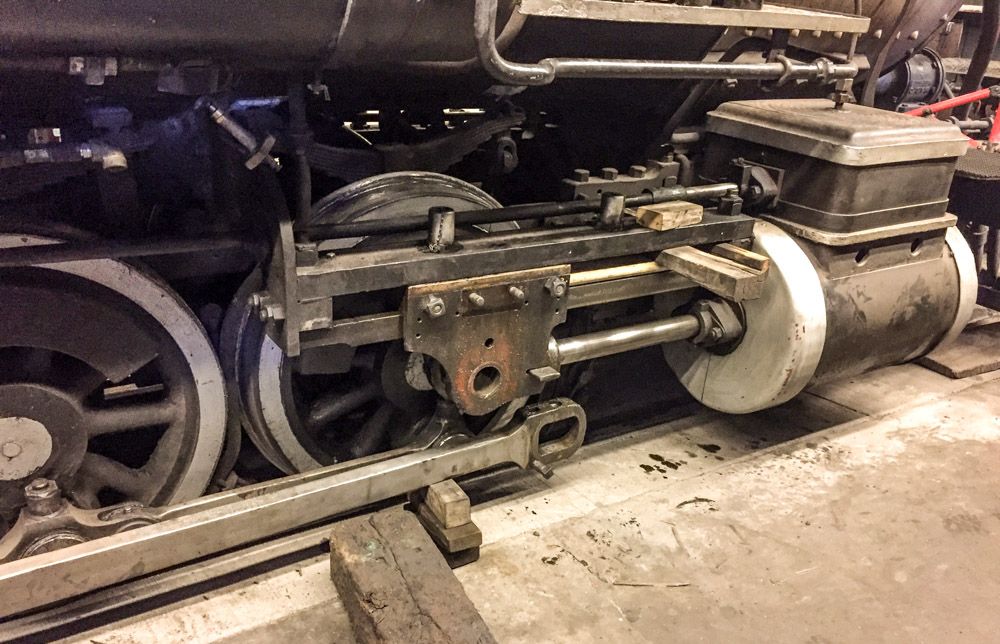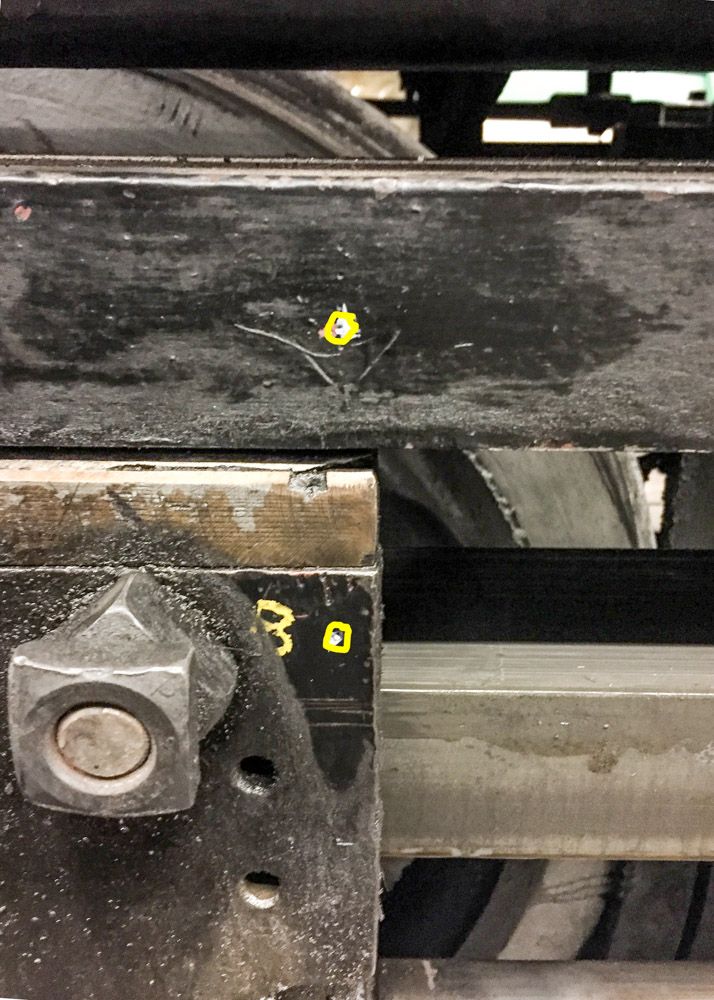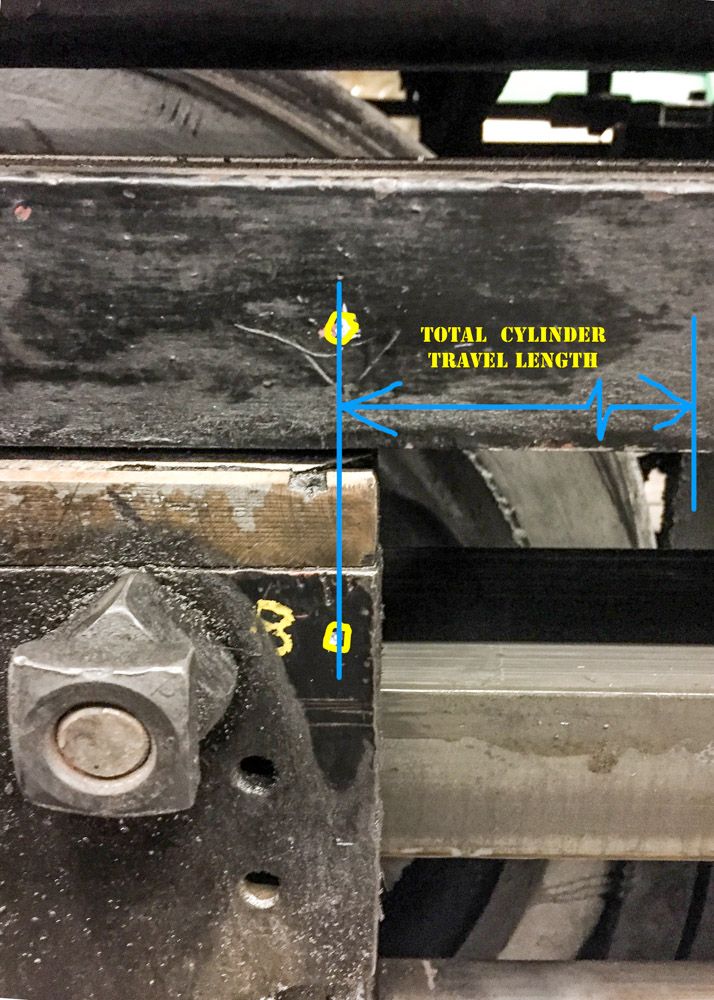Since we had the Main Rod dropped, we took the time to do a little Technical work, that can and will be used later to adjust the timing on the cylinders. At this time, 315 is very square, and we plan on keeping her that way. But should the need arise to re- or Check the timing we needed to check the stroke, and the available space between the piston, and the cylinder’s head. In other words, what is the maximum space for the piston to travel before there is interference between the piston and the head?
Here is 315s power end.

I failed to get a pic of the first step in the process. We pushed the piston all the way to the front, until it hit the cylinder head. At this time, we took a center punch, and then peened a punch mark on the crosshead in the top corner in the front.

Using a tri square aligned so we could then transfer that peens location, vertically, to the side of the top slide rail, we then peened another reference dot exactly above the one on the crosshead. Sorry no photos of this action.
We then pushed the piston to the rear, until it stopped against the rear cylinder head.

Here you can see that we have transferred the peen mark from the cross head up to the slider using a try square to mark the total rearward travel of the piston, and where it would come in contact with the cylinder head.

Using these marks, we now can measure the total MAX travel space within the cylinder before the piston hits the heads.
BTW: that would be a VERY BAD THING, if the engine was running.

We can now measure the distance between the front and the rear peen marks. On this side it measured out to be 21-7/8 inches. 315 has a 20 inch stroke, meaning that there is 1 - 7/8 inches clearance, divided by two gives aprox. 15/16 inch in front of the piston and the heads at each end of the stroke. We have not taken a critical measurement of the stroke yet by measuring the distance of the offset of the main rod pin to the center line of the main driver. We also will need to find the physical center of the piston stroke, by centering the main driver pin at TDC ( Top Dead Center ) of the wheel, with the rod attached, and then transferring the crosshead peen mark to the slider. We can then measure the accuracy of the center, and then extrapolate the actual clearance on each end of the piston stroke, which may not be the same.
Note in the pics, when you drop the main rod, the piston is free to do what ever it wants. Which includes becoming a torpedo right thru the Cylinder head, if under pressure someone opens the throttle even a little bit. We do the “Safety” thing and put a 2x4 between the cross head and the cylinder.
Thats all for tonight. More to come.






